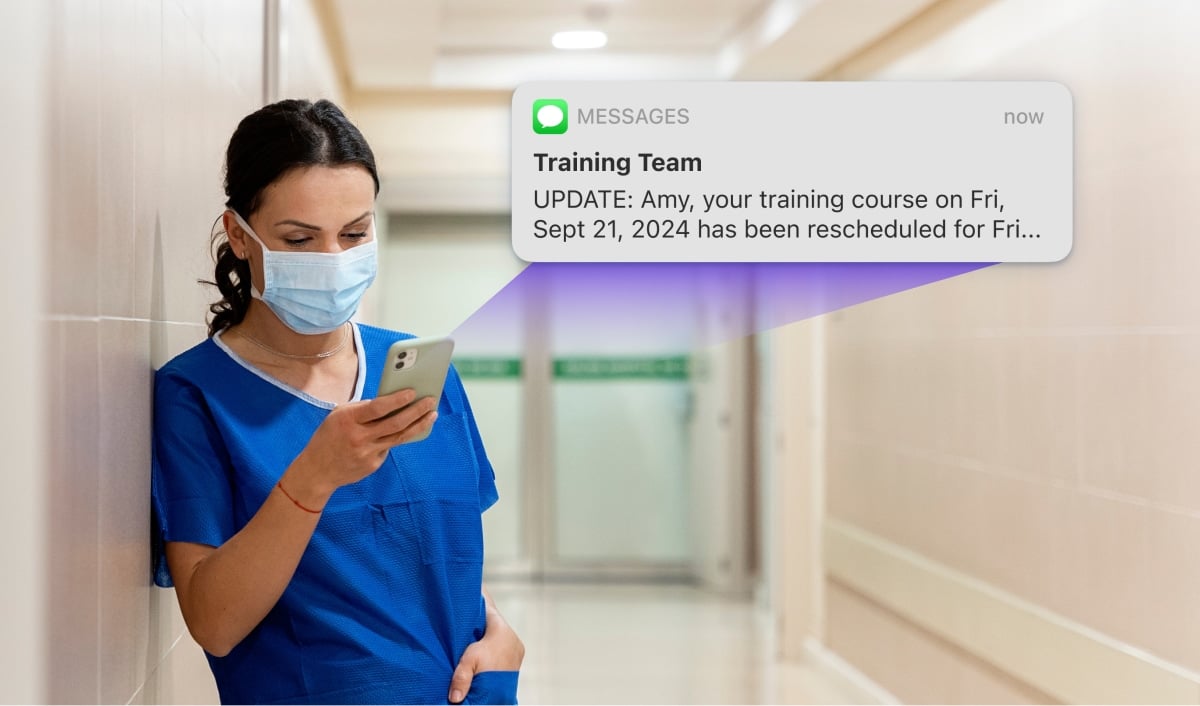Developing a training communication strategy that works across borders is a challenge. Global training operations mean coordinating messages in different time zones, languages, and cultural contexts. In this post, we break down how leading organizations overcome these obstacles and create a unified, effective communication strategy that supports their global training programs.
The Global Training Communication Challenge
Imagine a Fortune 500 technology company trying to standardize training messages across 23 countries. What works seamlessly in North America might cause confusion in Asia and even resistance in Europe. This real-world example highlights the difficulty of balancing consistency with local relevance. The journey from fragmented messaging to a cohesive global strategy offers valuable lessons for any organization looking to scale their training communication strategy.
Understanding Regional Communication Dynamics
A key part of any successful training communication strategy is recognizing that different regions have distinct communication needs. Here’s how communication preferences can vary:
Asia-Pacific Preferences
- Primary Channels:
- Mobile messaging apps like WeChat, LINE, or WhatsApp
- Short, engaging video instructions
- QR code integrations for easy access
- Real-time push notifications
- Communication Style:
- Emphasis on concise, visual content
- Use of hierarchical acknowledgments
- Group-oriented messages that foster collective action
- Frequent but brief updates
Organizations targeting the Asia-Pacific region must tailor their messages to be visual, short, and direct, with quick updates that match the fast-paced nature of mobile communications.
European Requirements
- Primary Channels:
- Formal email communications
- Professional networking platforms
- Detailed, formal documentation
- Integrated calendar systems for scheduling
- Communication Style:
- Detailed written instructions
- Emphasis on individual autonomy
- A privacy-first approach
- Structured feedback loops
In Europe, clear, detailed communications are essential. Training communication strategies here must balance formality with clarity, ensuring that each message provides comprehensive guidance while respecting local privacy norms.
Americas Approach
- Primary Channels:
- A mix of digital platforms
- SMS for urgent notifications
- Video conferencing tools
- Social learning networks
- Communication Style:
- Direct and action-oriented messaging
- An informal tone that encourages real-time collaboration
- Clear, immediate instructions
For the Americas, a blend of communication channels works best. The approach is direct, with messages designed to prompt immediate action and encourage collaboration among participants.
Building Your Global Communication Framework
A robust training communication strategy needs a strong framework. Here are the key components:
1. Core Template Architecture
A universal template can serve as the backbone of your global training communications. The template should include:
- Dynamic Region Detection: Automatically adjust content based on where the recipient is located.
- Language Selection: Ensure messages are sent in the recipient’s preferred language.
- Time Zone Optimization: Schedule communications to arrive during local business hours.
- Cultural Nuance Integration: Tailor content to respect regional customs and communication styles.
This core template serves as a starting point for all communications, ensuring consistency while allowing for regional adjustments.
2. Localization Strategy
Once you have your core templates, the next step is localization:
- Neural Machine Translation: Use advanced translation tools to convert messages accurately into multiple languages.
- Cultural Adaptation Engine: Adjust messaging to fit local cultural expectations and norms.
- Regional Compliance Checks: Ensure that communications meet local data and privacy regulations.
- Format Preservation: Maintain the look and feel of your templates across languages and regions.
A solid localization strategy ensures that your training communication strategy resonates with audiences no matter where they are.
3. Scalable Distribution System
A global strategy requires a reliable system for sending messages:
- Multi-Channel Delivery: Use email, SMS, mobile app notifications, and other channels to reach your audience.
- Regional Backup Servers: Ensure that communications are delivered even if one system faces outages.
- Local SMS Gateways: Provide fast, reliable notifications in regions where mobile messaging is key.
- Emergency Protocols: Have backup channels and escalation paths ready in case of system failures or urgent situations.
A scalable distribution system means that your training communication strategy can grow as your organization expands globally.
Success Metrics That Matter
To evaluate your training communication strategy, track these key performance indicators (KPIs):
Engagement Metrics:
- Message open rates by region
- Response time patterns
- Action completion rates
- Preferences for specific platforms
Operational Metrics:
- Translation accuracy scores
- Delivery success rates
- Volume of support tickets related to communication issues
- Overall system performance data
Monitoring these metrics helps you adjust your strategy and maintain high standards across all regions.
Real-World Implementation Strategy
Implementing a global training communication strategy can be broken down into four clear phases:
Phase 1: Global Assessment
- Map out your current communication flows.
- Document specific regional requirements.
- Identify compliance needs for each region.
- Survey stakeholder preferences to understand what works and what doesn’t.
Phase 2: Framework Development
- Create master templates that serve as the foundation for all messages.
- Build robust translation workflows.
- Establish clear approval processes.
- Design monitoring systems to track performance.
Phase 3: Regional Deployment
- Launch pilot programs in selected regions.
- Gather and analyze local feedback.
- Optimize communication workflows based on real-world performance.
- Scale the deployment to cover all regions gradually.
Phase 4: Continuous Optimization
- Regularly monitor performance metrics.
- Collect insights from each region.
- Update best practices based on feedback.
- Refine processes to keep up with changing requirements.
This phased approach ensures that your training communication strategy is practical, measurable, and adaptable to change.
Advanced Global Communication Features
To stay ahead, consider integrating advanced features into your training communication strategy:
Smart Channel Selection
- Automated Channel Selection: Choose channels based on regional preferences, message urgency, user behavior, and network conditions.
- This feature ensures that each message is sent via the most effective channel, maximizing engagement and clarity.
Compliance Management
- Integrated Compliance Tools: Ensure all communications adhere to local data protection regulations like GDPR, APAC data laws, and other industry standards.
- Keeping up with compliance not only avoids legal issues but also builds trust with your audience.
Building Cultural Intelligence
A truly effective training communication strategy recognizes cultural differences:
Communication Style Guide
- Regional Considerations: Define guidelines for formality, color symbolism, image usage, and time references that are culturally appropriate.
- This guide ensures that your messages are received positively and are culturally sensitive.
Message Timing
- Optimization Factors: Consider local business hours, regional holidays, cultural events, and work patterns.
- Tailoring the timing of your messages ensures they are seen when recipients are most receptive.
Transform Your Global Training Operations
A well-crafted training communication strategy can transform your global training operations. Start by mapping your global training footprint, documenting regional requirements, building a comprehensive template library, implementing automation tools, and continuously monitoring and optimizing your processes.
The Path to Global Excellence
By developing and implementing a solid training communication strategy, you can transform regional challenges into a global strength. Our platform helps deliver consistent, culturally appropriate communications across every time zone and language, ensuring your training programs are effective and engaging.
Ready to elevate your global training communications? Discover how our solution can help you achieve clarity and consistency across your entire training ecosystem. Schedule a demo today to see how a robust training communication strategy can transform your global operations.





